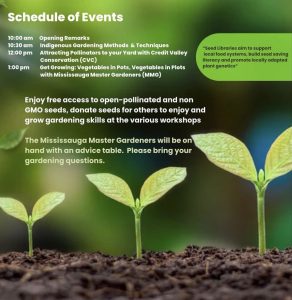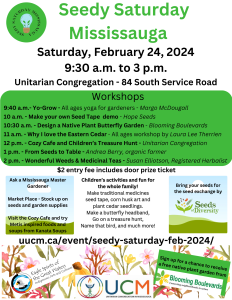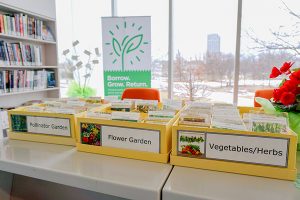“You’re essentially joining quite a big movement and that is reassuring,” she said.
She also lists giving people a sense of control, self-soothing and calmness as additional benefits of taking up gardening.
Michelle Wilson of the Master Gardeners Mississauga and Chinguacousy Garden Club believes the move to growing your own produce is the right step to self-sufficiency.
“We need to move away from ‘nice looking’ to having something to eat,” she said, explaining that aesthetically pleasing lawns and flower beds are not of such importance.
“These are trying times, if we get a second wave that (growing for aesthetics) is going to disappear, people do need to garden for themselves for security.”
Wilson has spent many years learning the do’s and don’ts of gardening and planting and has provided some tips for those experimenting with their green thumbs.
For the first time-gardener, it’s best to pick plants that are easiest to grow. Vegetables like radishes, herbs, lettuce, tomatoes, kale, swiss chard and squash are some that Wilson suggests.
Growing vegetables from plants instead of seeds is also suggested for beginners.
“Your garden area needs to have good drainage,” says Wilson, adding it will also need access to rain and good light, at least 6-8 hours of sunlight daily.
Enriched soils are better for growing conditions and Wilson suggests keeping your food waste to do the job. Crushed eggshells, coffee grounds and banana peels can be mixed in to create organic compost.
A tip that is often forgotten is giving your plants enough space, as Wilson explains, “a lot of times you get excited and plant too much.” Overcrowding will lead to the death of your plants.
If you don’t have access to garden space, Wilson suggests grabbing a pot and start experimenting.
“There’s no reason why we can’t grow things in pots,” says Wilson. “But they have to have deep roots.”
Beets, carrots, kale and swiss chard need pots large enough to home the growing roots, while herbs, lettuce and green onions can be grown in shallow containers.
Pots and containers will need to be placed in a sunny location to get their 6-8 hours of sun.
Wilson cautions that growing vegetables in containers above ground often dry out quickly and will need to be monitored during the warmer months.
In general, Wilson says to keep it simple — have fun and grow only what you will eat.
“Do not expect to learn everything all at once, there will be failure along with the success,” she said.
“This is key.”
For the meantime, there is no denying the impact of growing your own food, but will this practice continue after the pandemic is over? Both Wilson and Nasr hope the answer to that question is yes.
Hayes sees this moment as a chance to “learn how to improve our local food access and our relationship with foods, with farmers and with our fellow community members,” and hopes to see these relationships flourish in the future.




 Pandemic is providing an opportunity to build better connections with our food by creating edible gardens.
Pandemic is providing an opportunity to build better connections with our food by creating edible gardens.



